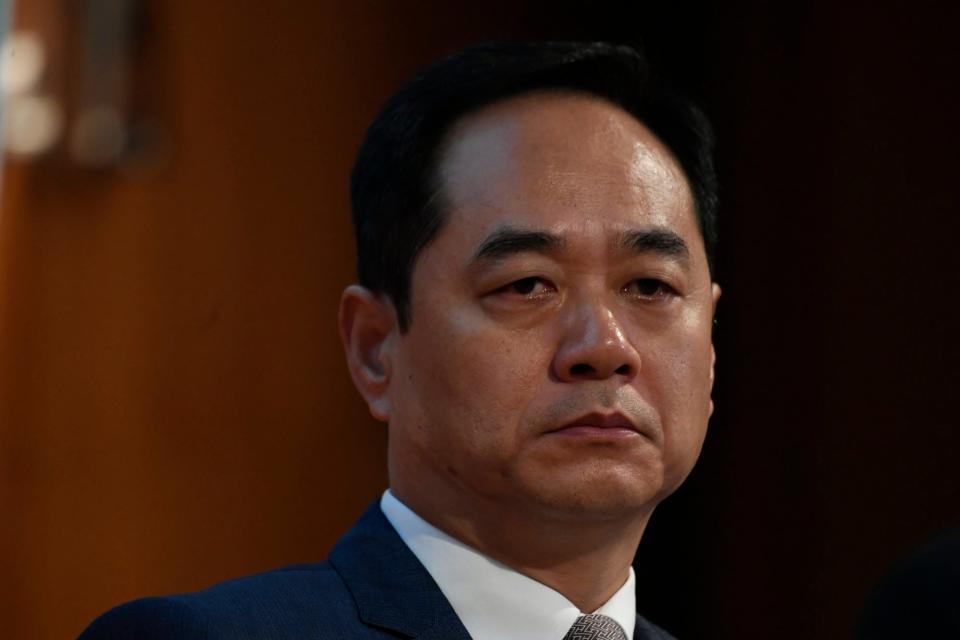China's push for closer US ties to focus on Greater Bay Area, Yangtze economic hubs
The Greater Bay Area will be among major economic hubs in focus as China seeks to drive people-to-people ties with the United States in the new year, the head of a key semi-official Chinese foreign affairs body has said.
Yang Wanming, president of the Chinese People's Association for Friendship with Foreign Countries (CPAFFC), said there was "vast room" for collaboration between the southern Guangdong-Hong Kong-Macau Greater Bay Area megalopolis with the San Francisco and New York City bay areas.
There was also similar potential for cooperation between the Yangtze River Economic Belt and the Mississippi River Basin, Yang told state backed digital outlet The Paper in an interview published on Tuesday.
Do you have questions about the biggest topics and trends from around the world? Get the answers with SCMP Knowledge, our new platform of curated content with explainers, FAQs, analyses and infographics brought to you by our award-winning team.
Apart from Hong Kong and Macau, the Greater Bay Area covers nine megacities in China's prosperous Guangdong province, including tech hub Shenzhen. The eastern Yangtze River Economic Belt, centred around Shanghai, covers 11 provinces and municipalities along the world's third longest river.
"Our association will continue to coordinate and advance mutual visits and exchanges between those [US and Chinese] regions, promoting regional economic development and delivering tangible development interests to more local areas in both countries," Yang said in the interview published on Tuesday.
This would be part of broader efforts this year by the CPAFFC - which is tasked with boosting friendly overseas exchanges - to expand civil and subnational China-US ties as the two countries mark 45 years of diplomatic relations.
Presidents Xi Jinping and Joe Biden marked the milestone in congratulatory messages on New Year's Day, the exchange coming as both countries seek to reset ties following months of heightened tensions.
In his letter, Xi emphasised his willingness to jointly "steer China-US relations, benefit both China and the United States and their people, and promote world peace and development".
On Tuesday, the Chinese foreign ministry also highlighted Beijing's readiness "to work with the US to ... jointly promote people-to-people exchanges" and commitment to a "stable, sound and sustainable" relationship with Washington.
Citing the in-person meeting between Xi and Biden in November, the ministry said the two leaders had "fostered a future-oriented San Francisco vision, which points the way forward for bilateral relations".
Yang's comments in The Paper come amid increased emphasis from Beijing on cultivating non-governmental and local-level interactions with the US, especially ahead of the much-awaited San Francisco summit.

Yang Wanming is hopeful that "China-US subnational cooperation will show vitality and vigour again". Photo: AGIF via AFP alt=Yang Wanming is hopeful that "China-US subnational cooperation will show vitality and vigour again". Photo: AGIF via AFP>
In June, Xi welcomed Microsoft co-founder and billionaire philanthropist Bill Gates to Beijing as an "old friend", Chinese diplomatic terminology used for influential foreigners seen as more receptive of China's views.
He used the term again when the Henry Kissinger, former US secretary of state, visited the following month.
Kissinger, who died in November, had paved the way for the normalisation of US-China relations in the 1970s, with formal diplomatic ties established on January 1, 1979.
The governor of California, Gavin Newsom, also received a warm welcome when he visited China a few weeks before the San Francisco Xi-Biden summit.
Hong Kong, Shenzhen and Guangzhou, the three economic hubs anchoring the Greater Bay Area, were Newsom's first three stops during his week-long China tour ahead of a meeting with Xi in Beijing in late October.
During the Xi-Biden summit on November 16, the two presidents agreed to encourage educational, student, youth, cultural, sports and business exchanges.
At a dinner later with American business leaders, Xi reiterated his view that hopes for better China-US ties lay "in our peoples" and that its vitality came from "exchanges at subnational levels".
Yang at the CPAFFC sounded a hopeful note for people-to-people interaction. "As China-US personnel exchanges gradually return to normal, China-US subnational cooperation will surely get back on track and show vitality and vigour again," Yang, whose responsibilities include managing China's sister city relations abroad, said.
China and the US have agreements on 284 "sister" pairs, involving 234 pairs of sister cities and 50 sister provinces and states.
Yang said the CPAFFC planned to hold a forum on cooperation between Chinese provincial and US state legislators and a round table of the two economies' agricultural sectors this year, in addition to pushing "in-depth" subnational communication on green development and climate change.
This year's aims also include a China-US youth exchange week in Kuliang, in southeastern Fujian province. The mountain town, known as Guling in Mandarin, used to be a popular summer resort for foreigners including Americans in the early 20th century, and became a melting pot of Chinese and Western cultures.
This article originally appeared in the South China Morning Post (SCMP), the most authoritative voice reporting on China and Asia for more than a century. For more SCMP stories, please explore the SCMP app or visit the SCMP's Facebook and Twitter pages. Copyright © 2024 South China Morning Post Publishers Ltd. All rights reserved.
Copyright (c) 2024. South China Morning Post Publishers Ltd. All rights reserved.

 Yahoo Finance
Yahoo Finance 